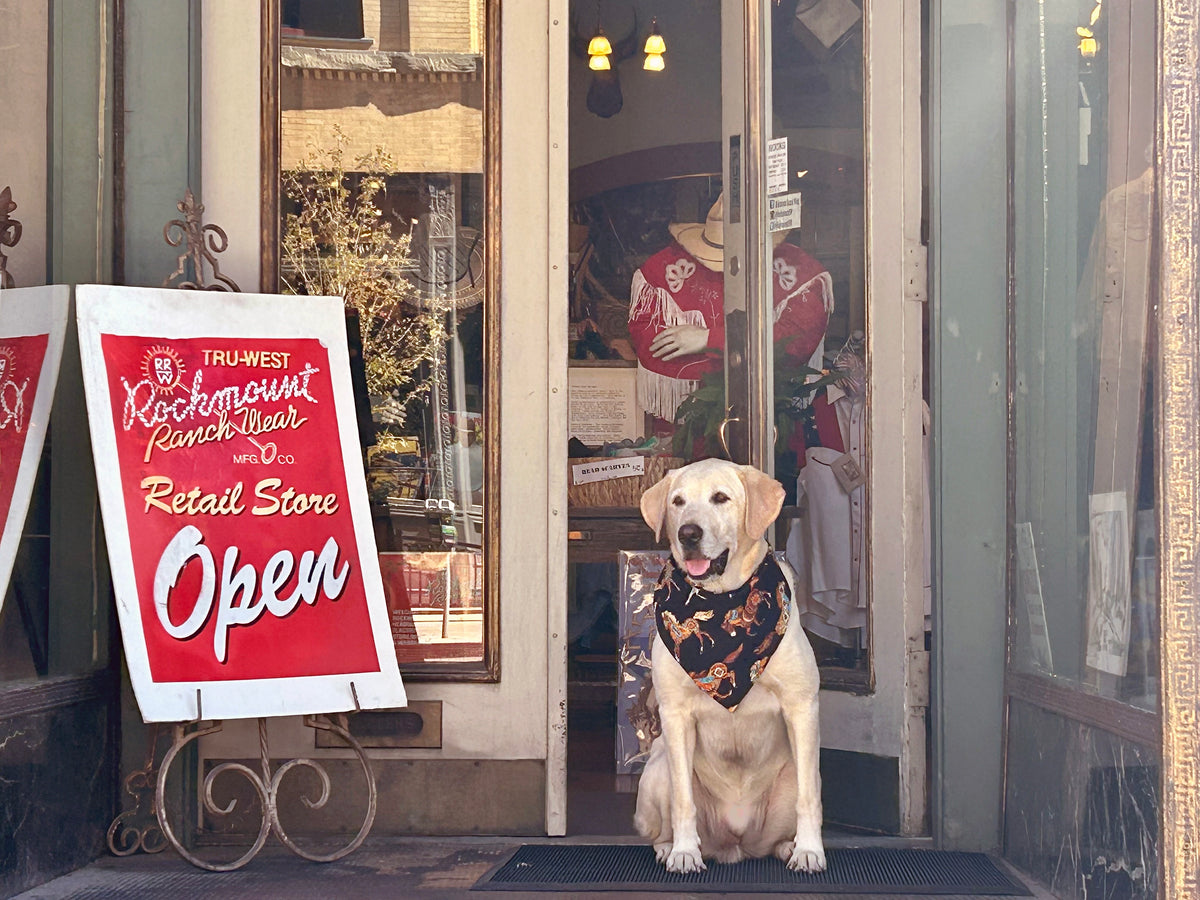The San Diego Union-Tribune - From Wild West to Modern Denver, the Look is New

From Wild West to modern Denver, the look is new
DAN ELLIOTT, Associated Press Writer
January 3, 2010, 9:00 AM | DENVER
Thousands of cowboys and cowgirls will be decked out in their Western finery at the National Western Stock Show in Denver this month. But if an original cowboy from the late 1800s somehow stumbled in, would he recognize anybody?
"He wouldn't even recognize the cows," said Steve Weil, president of Denver's Rockmount Ranch Wear.
Western wear today doesn't look much like what the legendary young cowhands wore from the 1870s through the 1890s, designers and historians say. The clothing has adapted to meet changing styles, just as cattle have been bred to meet evolving tastes.
In the 1880s, Texas cowboys often wore battered, floppy hats and loose pants made of wool or canvas. Cowboys from California or other parts west of the Rockies more likely wore tighter pants made of denim and a red sash, a carry-over from the Mexican vaqueros.
Or a cowboy's clothes might be a chaotic mess with no discernible style at all, said Don Reeves, a curator at the National Cowboy & Western Heritage Museum in Oklahoma City.
"In earlier times, you had such a mismatch of people and the clothes they wore. They looked more like refugees than cowboys," said Reeves, who holds the McCasland Chair of Cowboy Culture at the museum.
An event like the National Western, with 16 days of rodeo, livestock contests, auctions and Wild West shows, draws hundreds of thousands of people with a noticeably tidier look.
Today's well-dressed cowboys and cowgirls are more likely to wear a clean hat with a carefully creased crown, maybe in a style called "Cattleman" or "Montana" or "Gus." They might also wear a brightly colored shirt and heavily starched jeans.
"My dry-cleaning bill is through the roof," said Keith Mundee, vice president for sales and marketing for Rocky Mountain Clothing Co. of Denver. "Just this weekend I spent $140 on starched jeans."
Cowboy boots may have changed the least over time. Such embellishments as high heels and decorated uppers appeared early as cowboys tried to set themselves apart, Reeves said.
"Even in the 1870s, they would try to show that 'I'm a Texan, I'm a cowboy, I don't walk behind a plow,'" he said.
It wasn't until the 1920s and 30s, years after the cattle drives that made the cowboy an American hero, that the style we recognize today as Western wear began to emerge, Reeves and Weil said.
That had as much to do with Hollywood and the music business as it did with working cowboys.
"Western fashion as we know it really came into its own with the movies, the Western movie," Weil said. Before the 1920s, "Western fashion as we know it did not exist."
The look hit its zenith in the 1940s with the fancy outfits of Roy Rogers and Gene Autry, the singing cowboys and movie stars, Reeves said. "The Lone Ranger" and "Hopalong Cassidy" TV Westerns carried the look in the 1950s.
Reeves once saw an original Lone Ranger costume, including stretchy blue tights. "It was, ew-w-w,, kind of scary. You looked at the suit and it was kind of like dance class," he said.
But the Lone Ranger's hat, boots and gun belt were enough to convince audiences that he was a cowboy.
"Even though the rest of it had more to do with leotards than what cowboys wore, we said, 'Yeah, that's a cowboy.' We made that cognitive leap," Reeves said.
Rodeo performers in the early 1900s had an underrated influence on the Western look, Reeves said. They started wearing bigger hats and brighter colors to get noticed, and teenagers in the audience began to imitate the style when they dressed up for a dance, if not when they went to work in the saddle.
Western wear has evolved into a hardy industry, if a relatively small one. Sales figures are hard to come by, but Mundee of Rocky Mountain Clothing estimates the segment accounts for about $500 million a year in sales. The overall U.S. apparel market is about $200 billion a year, said Beth Boyle of NPD Group, a market research provider.
People in the Western wear business say it's relatively stable, even during the recession.
"We've always done well through the downturns," Mundee said. "They may not buy a new truck, or horse, or saddle, but they always want to look good."
Weil said one of the industry's strengths is that it embodies the West.
"That was the whole point when my grandfather went into business, to make something for a Western identity which was emerging," Weil said.
His grandfather, "Papa Jack" Weil, founded the company in 1946 and is credited with developing such signature Western looks as snap-button shirts and pockets with a sawtooth pattern. Jack Weil, who died in 2008 at age 107, went to work daily until a few days before his death, his grandson said.
Rockmount is now known for putting its Western shirts on the backs of everyone from guitarist Eric Clapton to actor Hugh Grant in "Did You Hear About the Morgans?"
It's a look that never goes out of fashion, Steve Weil said.
"Who doesn't long for what it represents? Wide open spaces, rugged individualism, the myth of the cowboy," he said. "It's something that people universally understand and respect."
---
On the Net:
National Western Stock Show and Rodeo: http://www.nationalwestern.com/nwss/home/home.php
National Cowboy & Western Heritage Museum: http://www.nationalcowboymuseum.org/
Rockmount Ranchwear: http://www.rockmount.com/
Rocky Mountain Clothing Co.: http://www.rockymountainclothing.com/
Copyright © 2018, The San Diego Union-Tribune
